 Flow view
Flow view
Research & Design • Trifacta • 2019 – Present

Problem Data analysts experience undue friction completing complex data transformation projects. While a “flow view” provides basic navigation and object management, analysts can’t naturally combine data, must tediously inspect uncertainly long recipes, and can’t reposition their recipes.
Opportunity Improve Trifacta’s flow view for people to author naturally, understand their work clearly, and rearrange their work flexibly.
Solution Designed an improved interaction workflow for joining and unioning from the flow view, a more transparent representation of objects/information, and a system of relaxed yet predictable layout rules.
Tasks Conduct research by mapping user journeys, analyzing competitors, conducting user interviews, organizing feedback, and prioritizing problems. Explore, set, and communicate product vision to stakeholders. Support a team of 6 developers and 1 product manager by testing click-through prototypes with users, delivering mockups in Sketch & Figma, and providing detailed documentation in Dropbox Paper.
Context
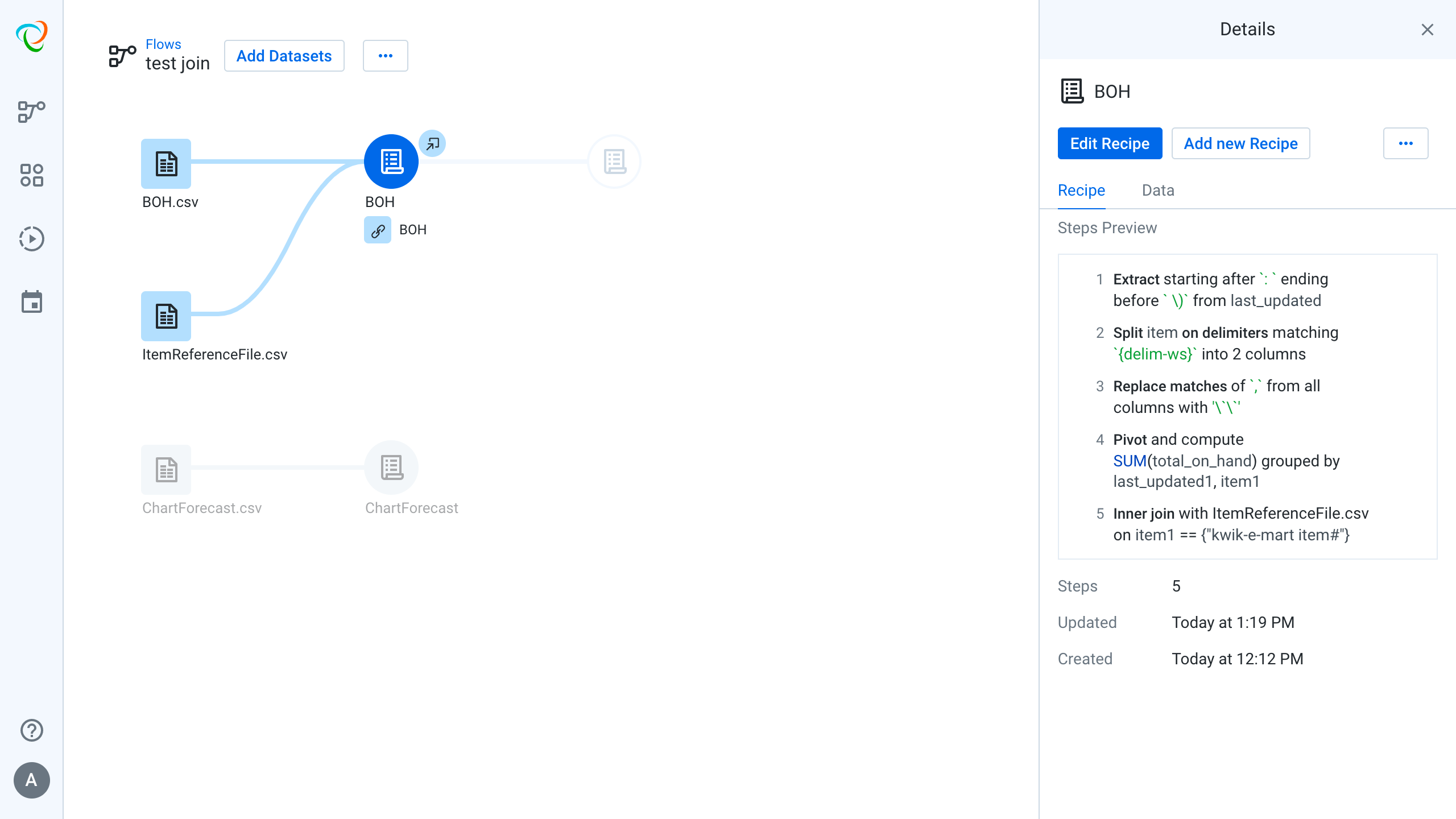
Over two releases I led the design of “flow view”, a new feature where people are able to navigate the relationships of data being combined throughout their transformation work, explore variations of transformations with branches, reuse data across projects with references, and publish data with clarity. Since its first introduction in the spring of 2017, we continued to collect feedback from the community of users and from our colleagues in the field for opportunities to improve.
Discovering the problems
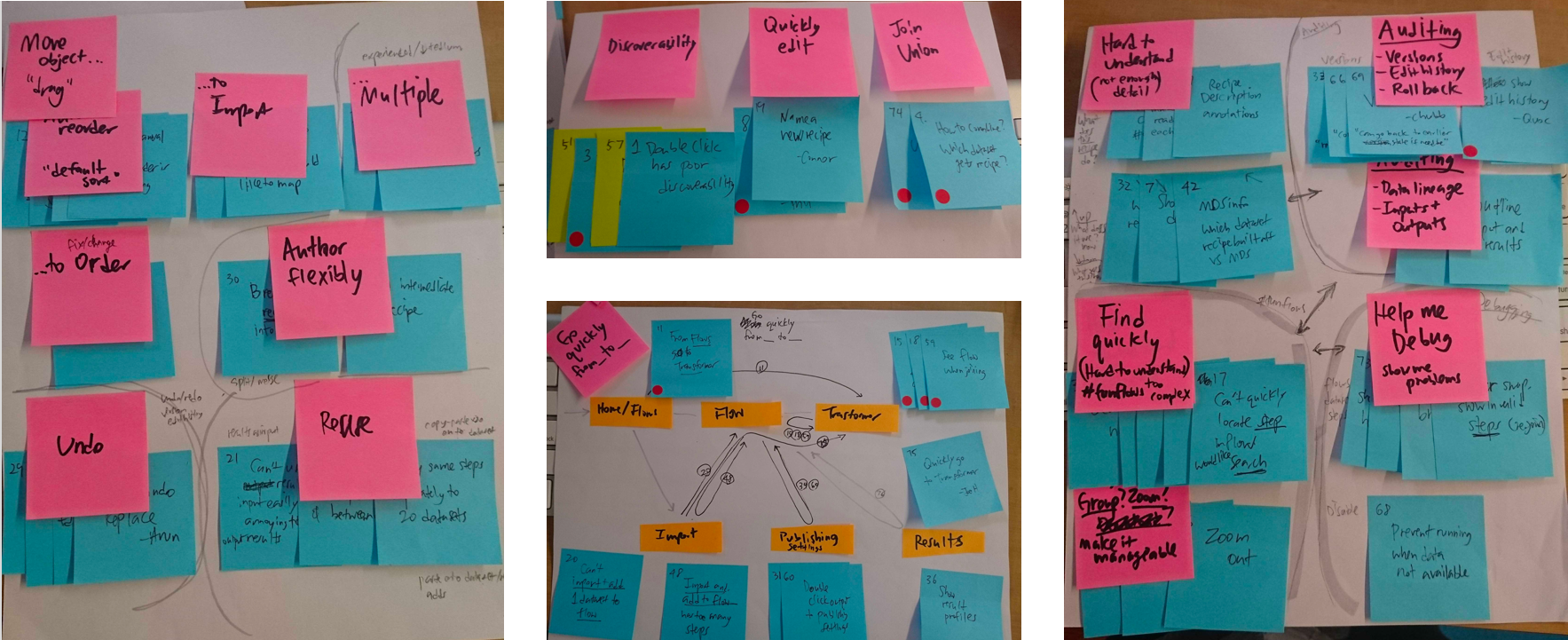
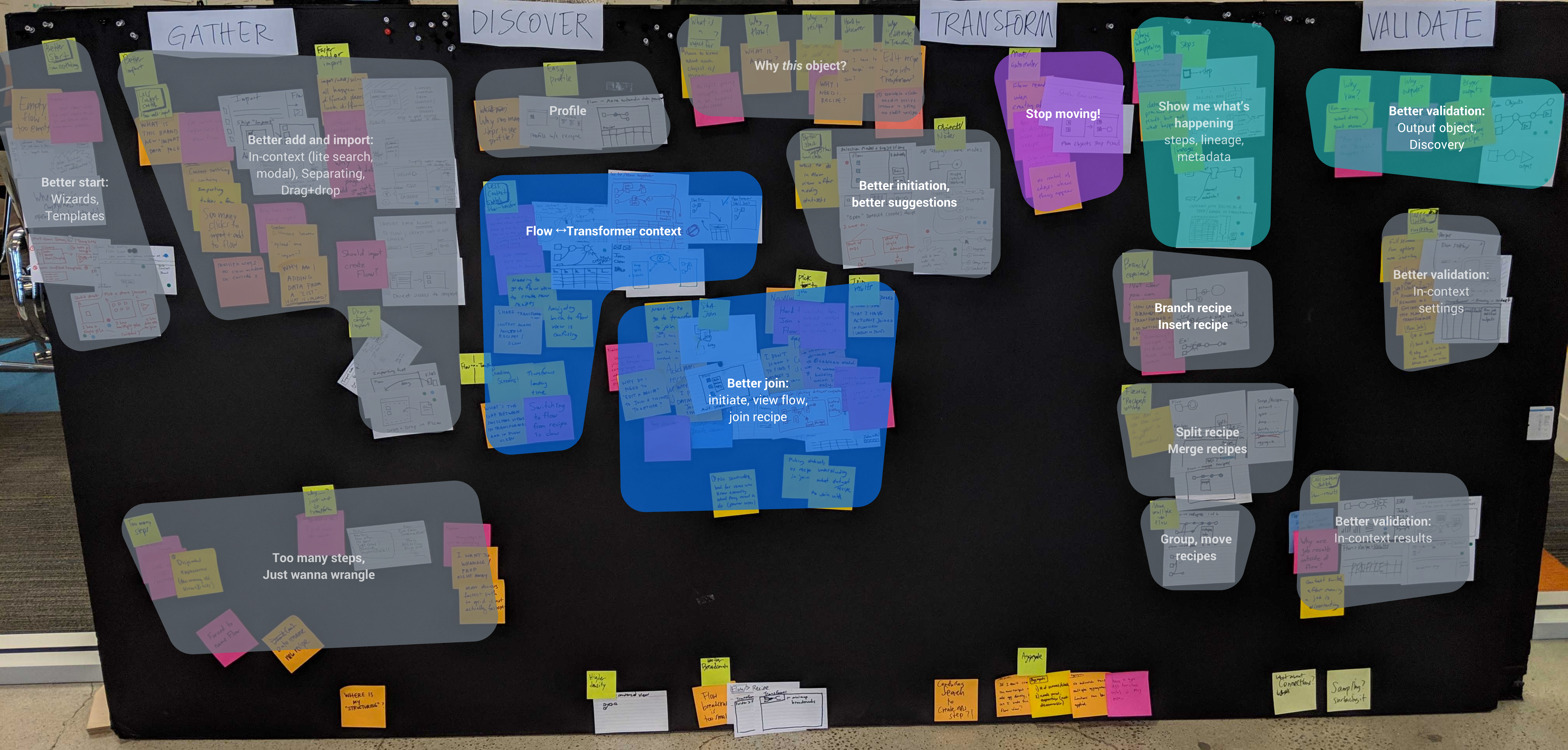
Three major problem spaces were identified after conducting user interviews, organizing self-reported requests/feedback, and running internal workshops.
Problems
Data analysts can’t combine data at the flow view and are forced to initiate within the data view, where they lose context that’s crucial for a successful join or union.
In addition, analysts can’t easily discern among their flow’s dozens of recipes and outputs; troubleshooting requires inspecting each item tediously.
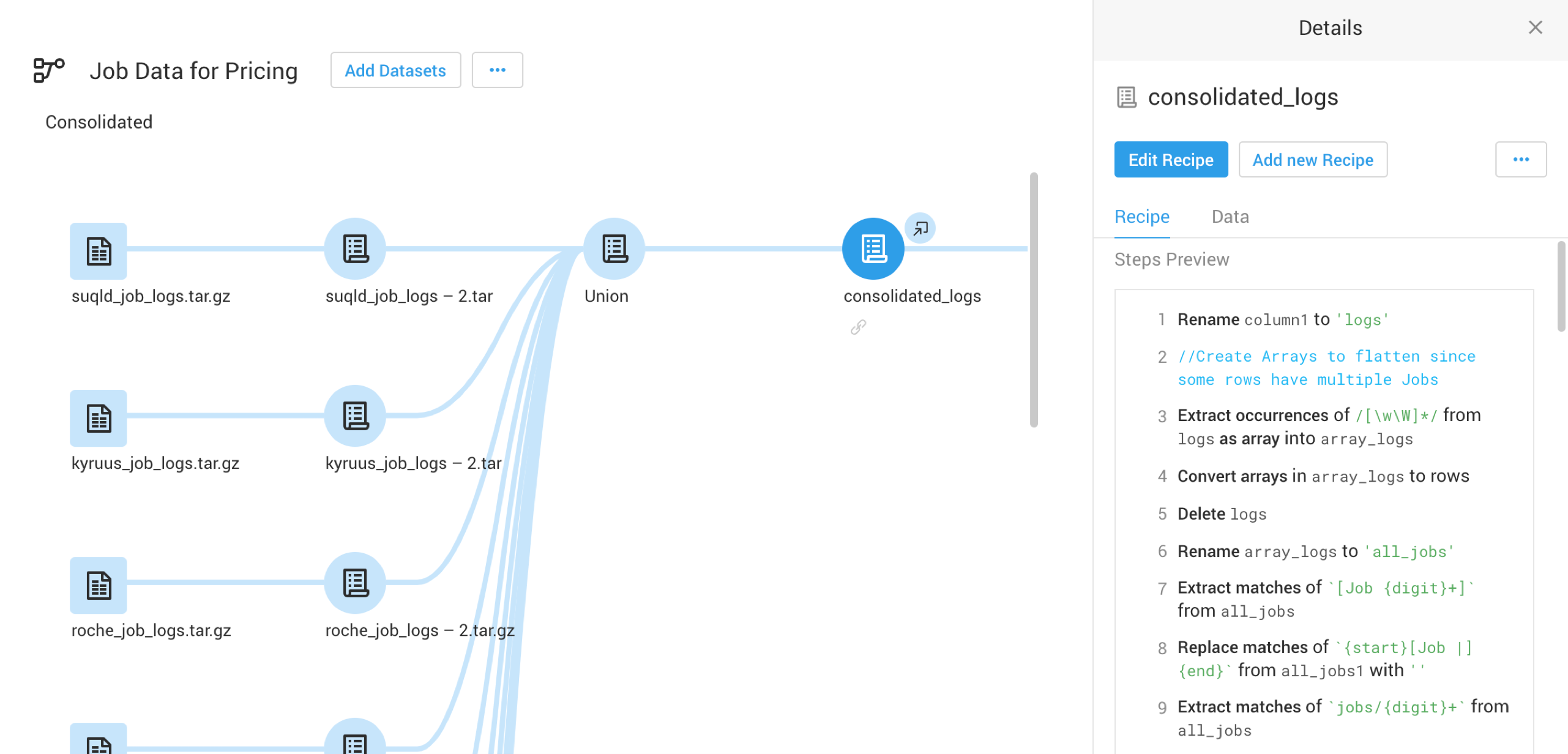
Finally, users are disoriented by the enforced automatic layout rules and frustrated they can’t reposition objects.
Opportunity
How might we improve Trifacta for data analysts to author naturally, understand transformations clearly, and work flexibly?
Explore
For each problem, explored questions and potential design directions.
Specifically for authoring naturally, I explored various entry points (context menu, multi-select, panel), modifications to the task’s tooling (modal vs as-is full screen), and the resulting effects (object, landing page).
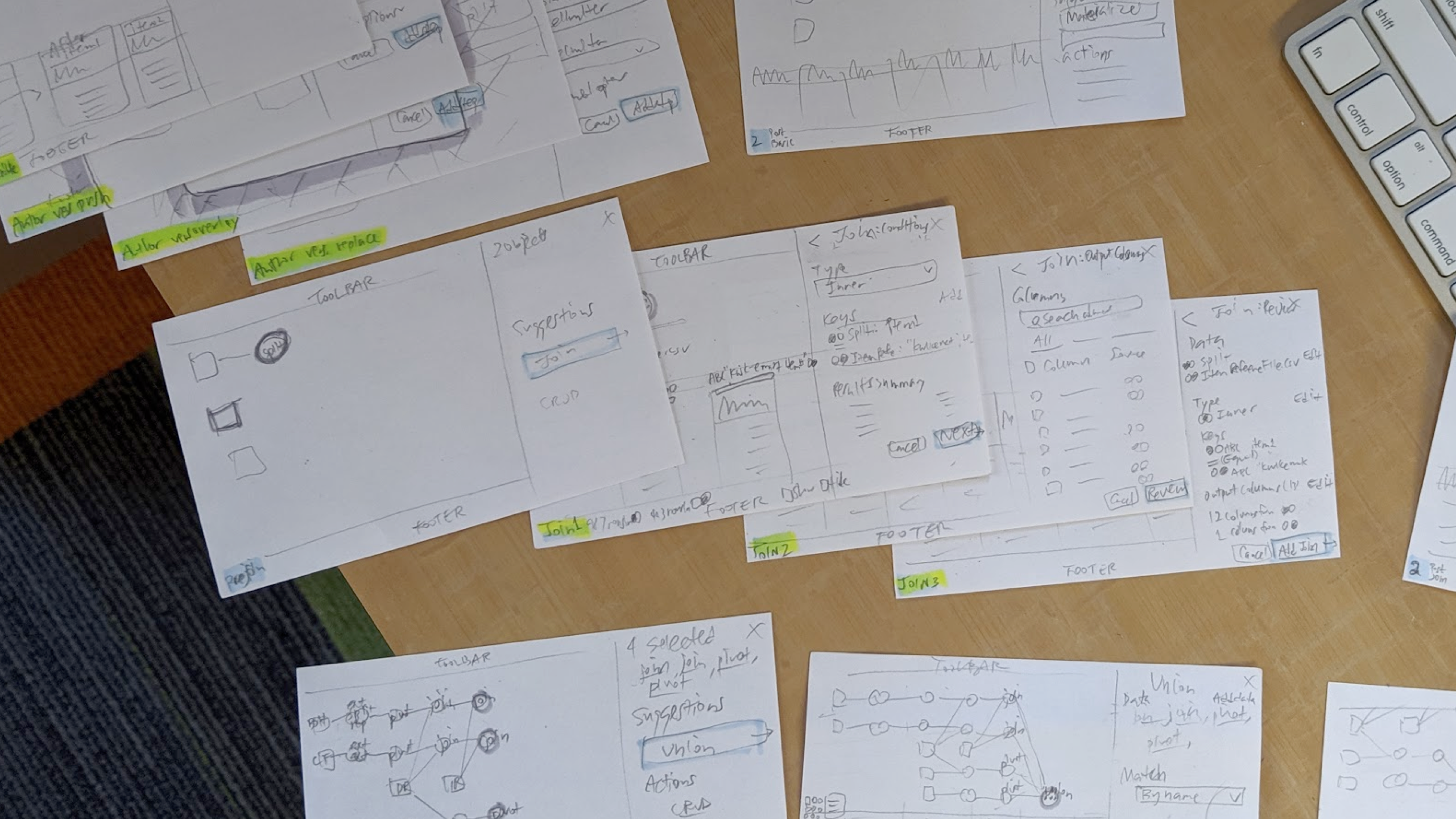
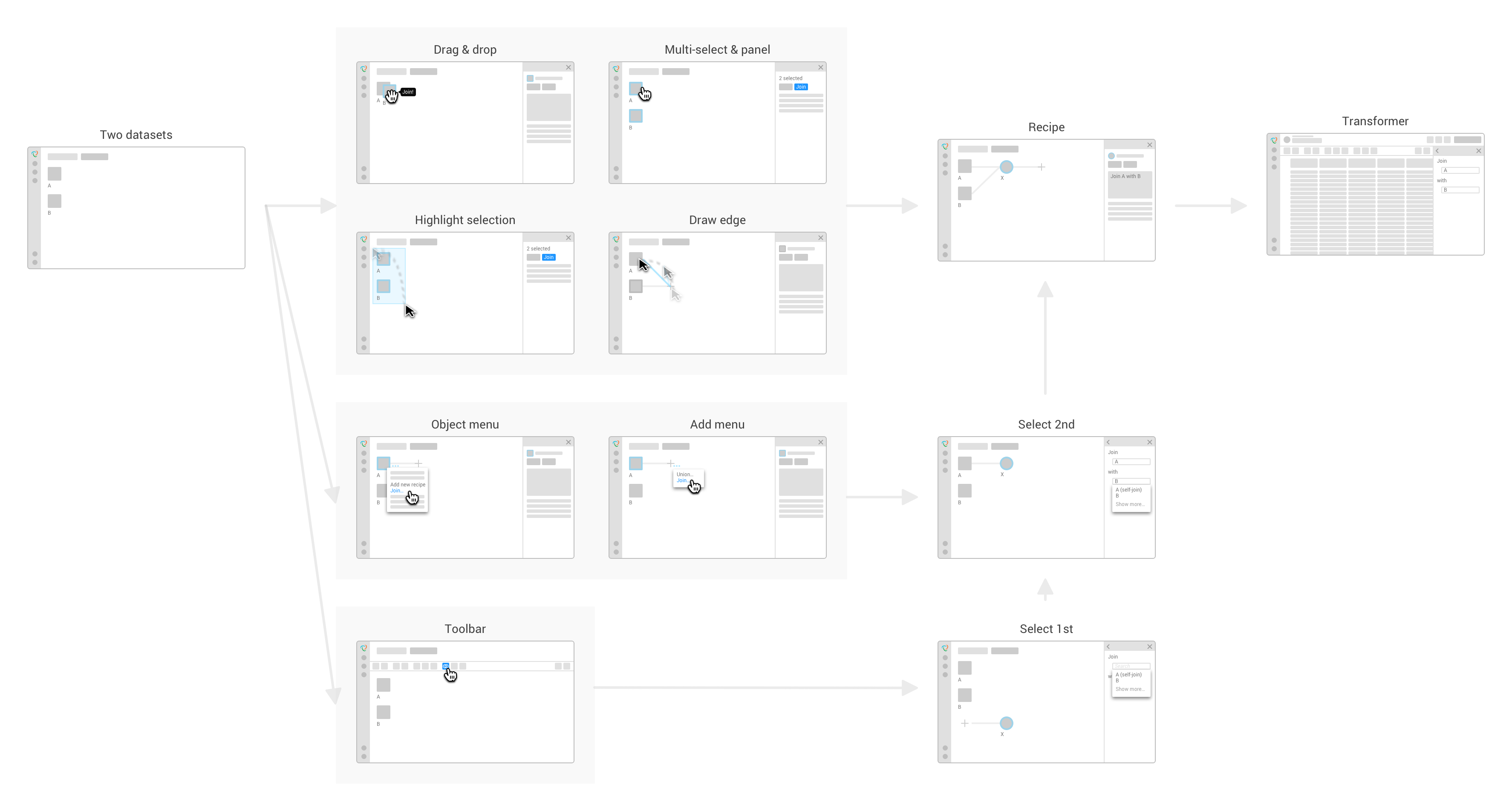

Looking past the horizon, I explored directions for the broader authoring experience. Can context or data be useful for successfully completing tasks?
Test & Iterate
Initial design decisions were made to ensure the task was clear to the user (suggestions) while being technically feasible (tool unchanged). Armed with wireframe prototypes, I tested internally with 3 customer success managers and externally with 4 users.
Feedback provided insight into what the users viewed crucial (multi-select, flexible selection of main table, landing in the data view), beneficial (tool modal), tolerable (unchanged object model), and unimportant (importing mid-task).
As a result, I worked with the project team to modify the tasks' tools and the workflow.

The prototype was updated to reflect the latest decisions made.
Solution
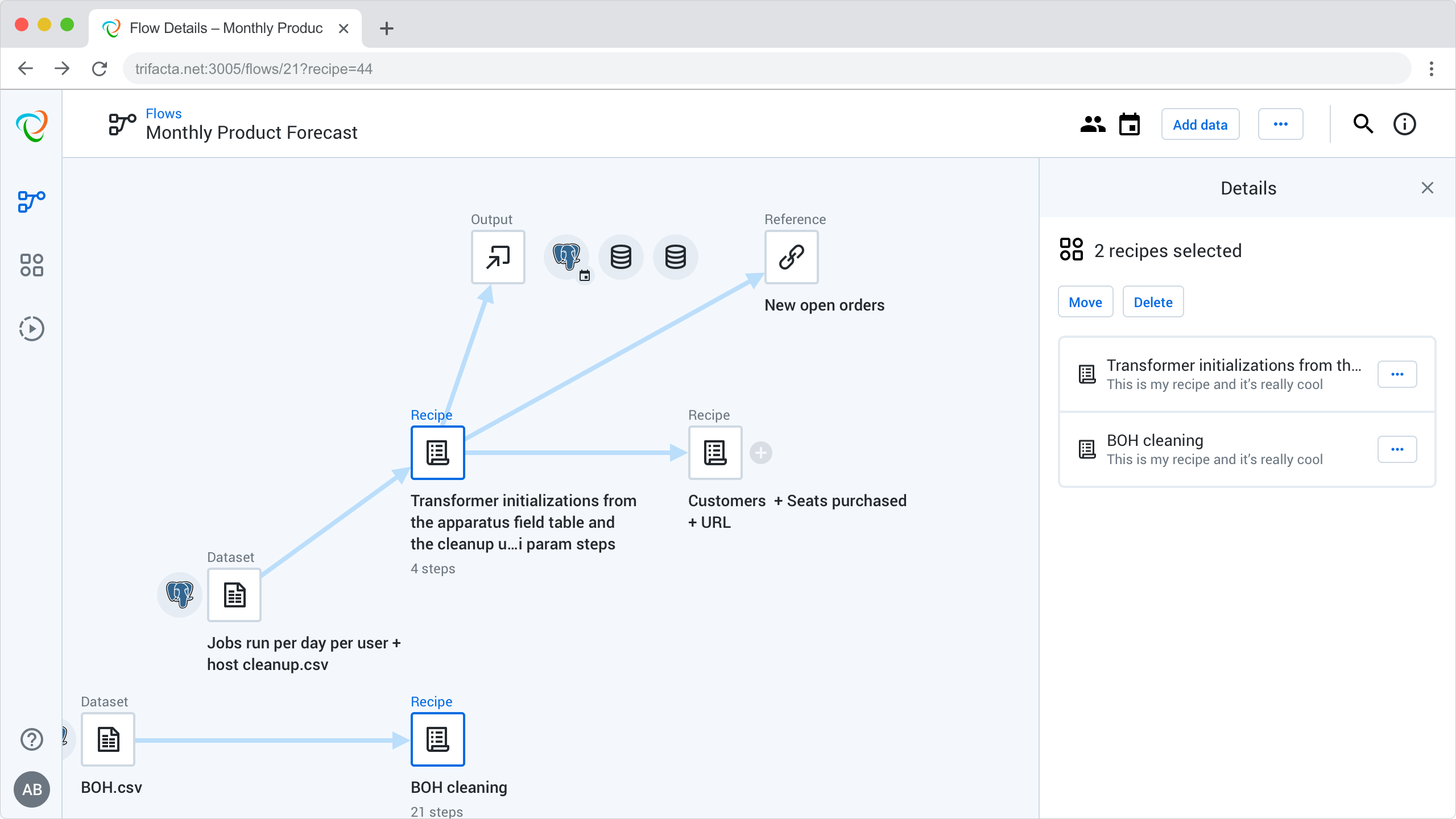
The final design provides to the user various entry points to join & union, a revamped presentation of objects and information (progressive metadata disclosure, destinations, notes), and dynamic placement (snap to grid) and navigation (zoom) within their flow.